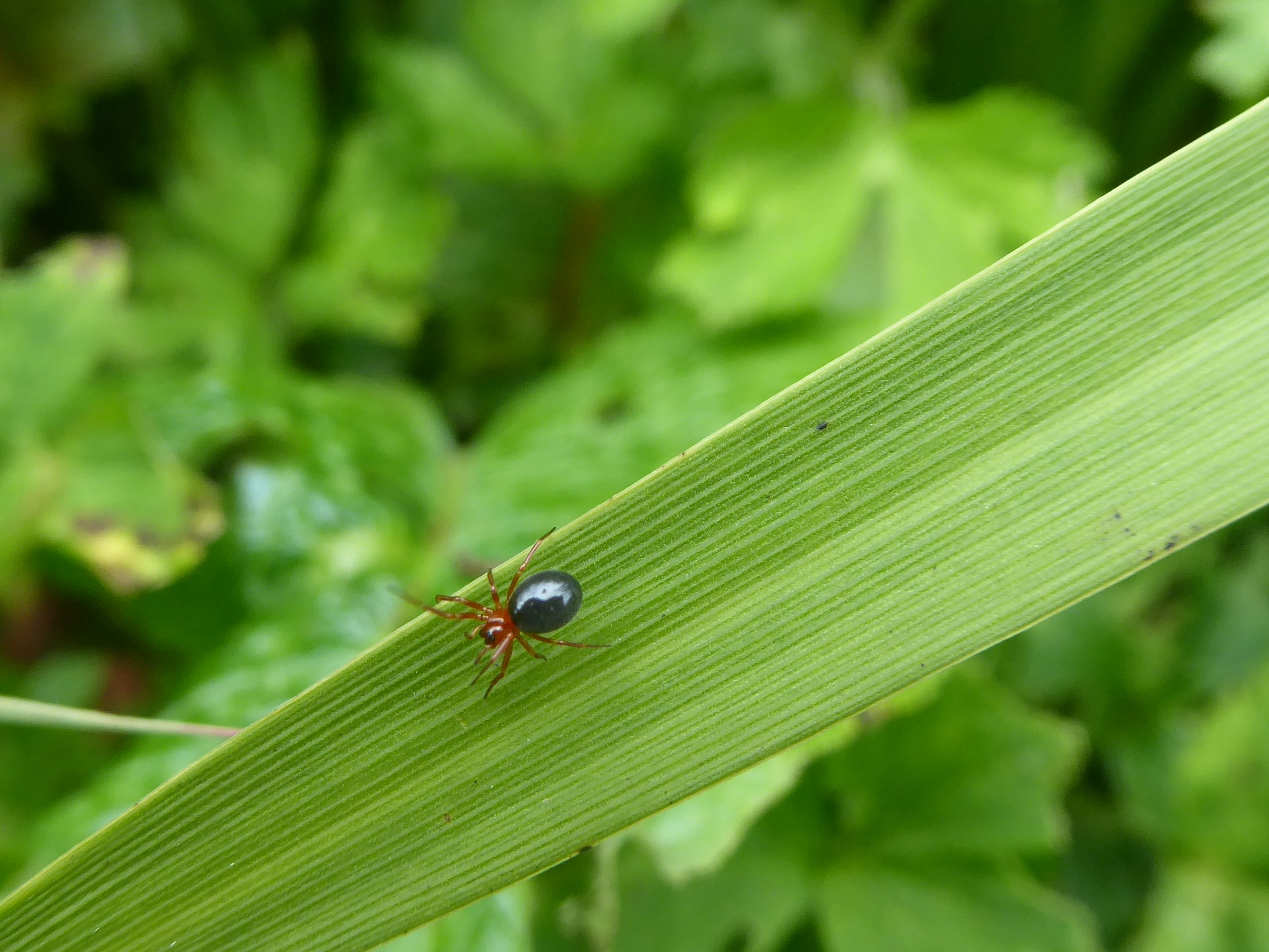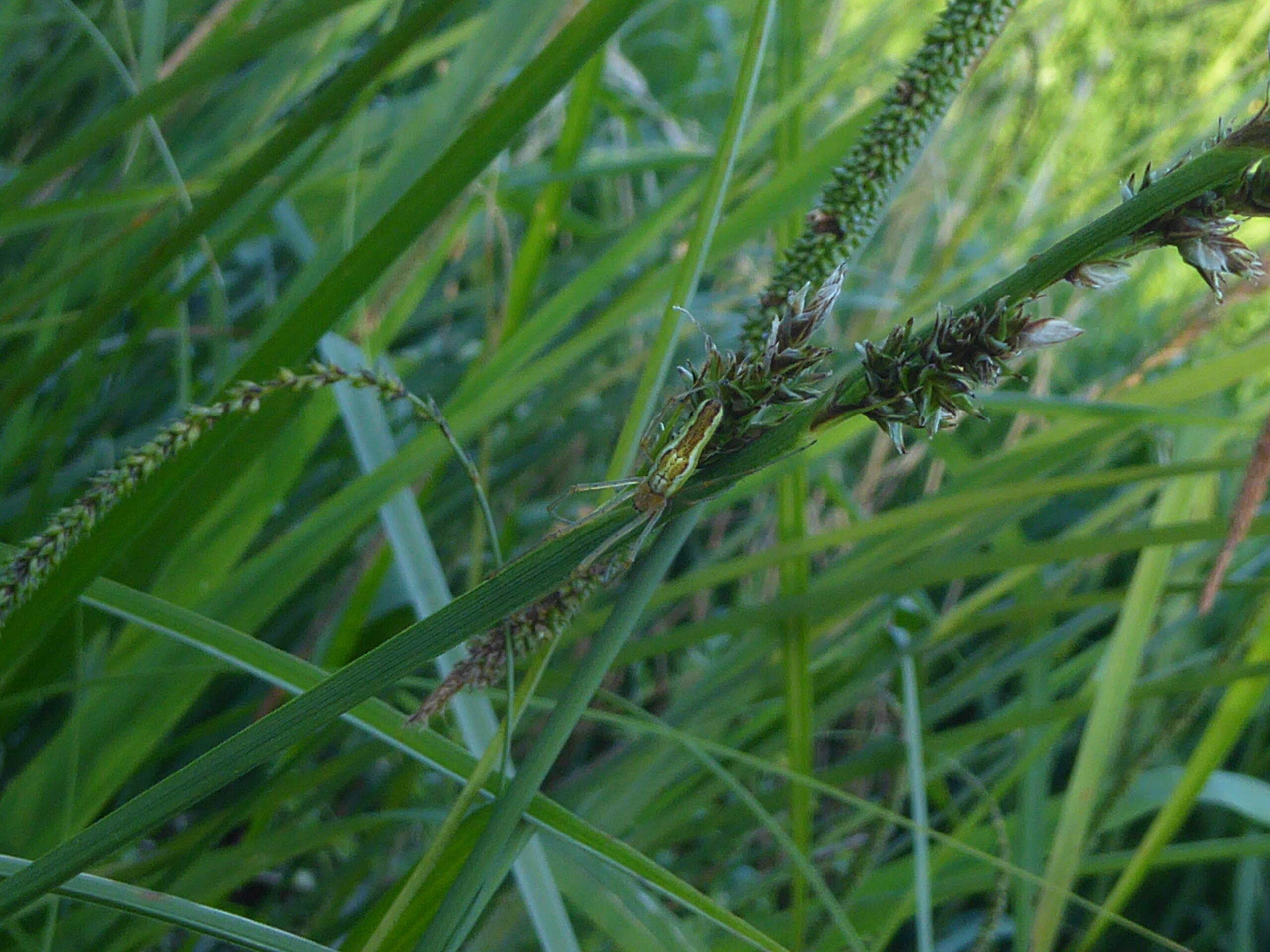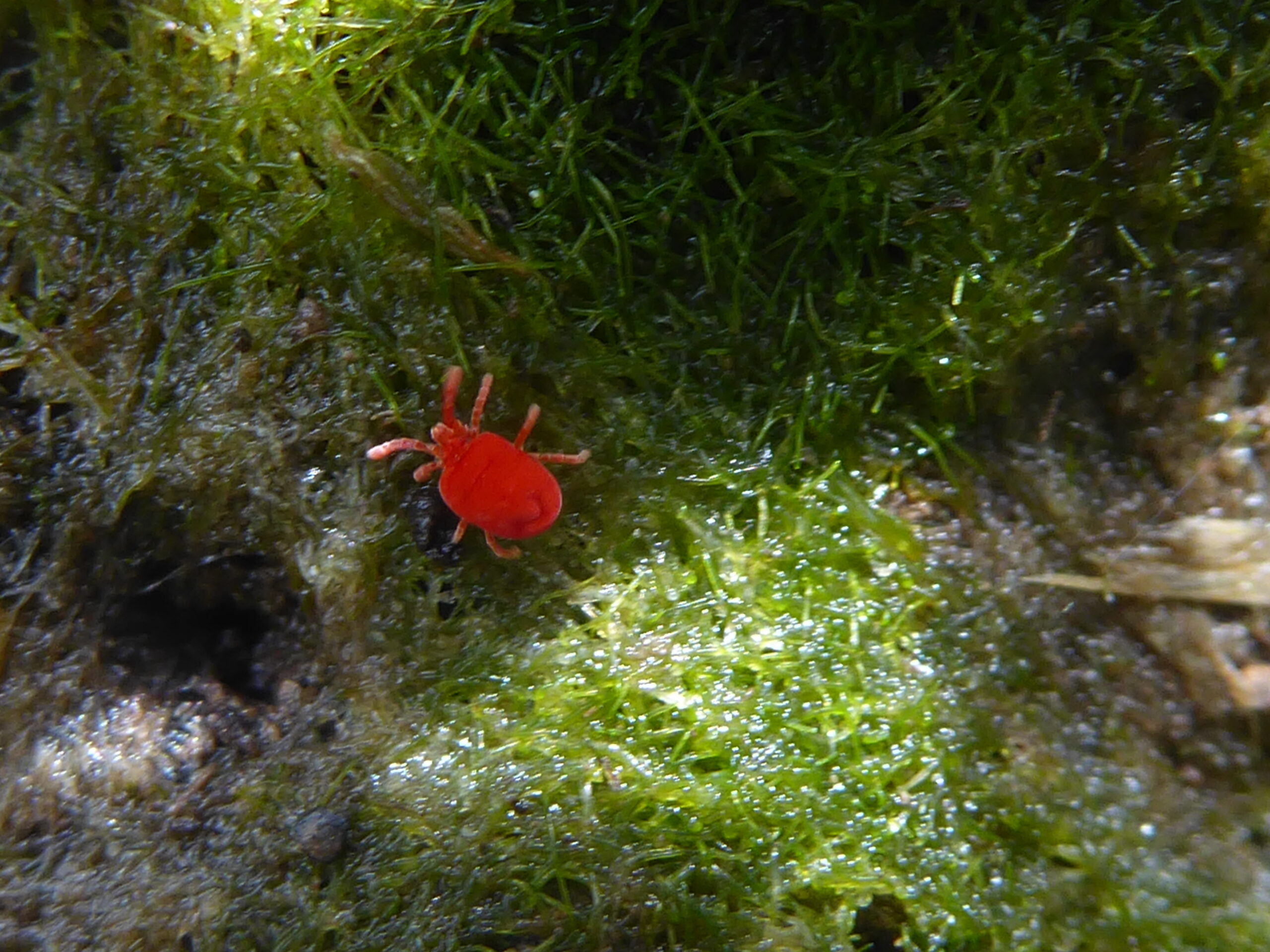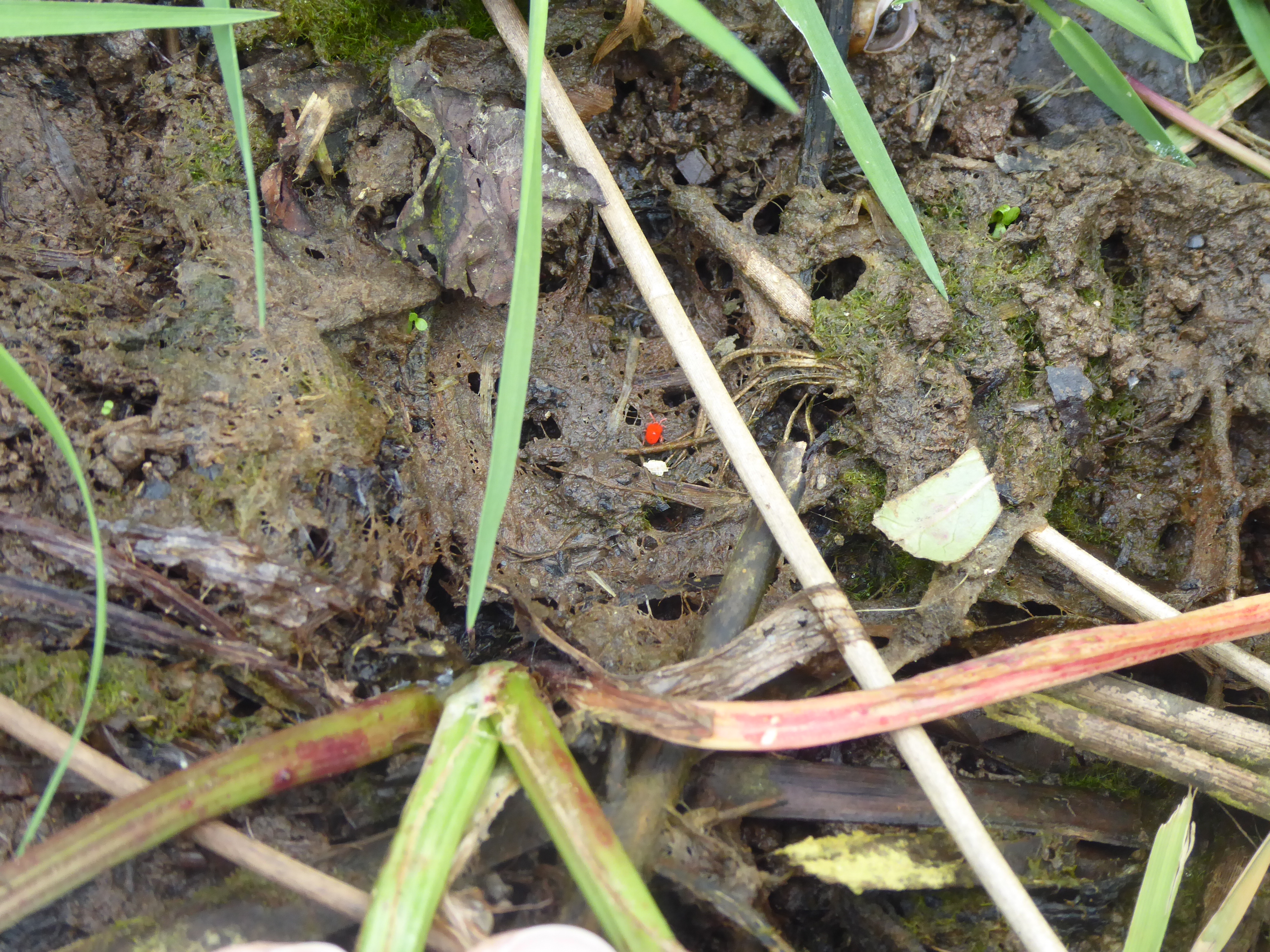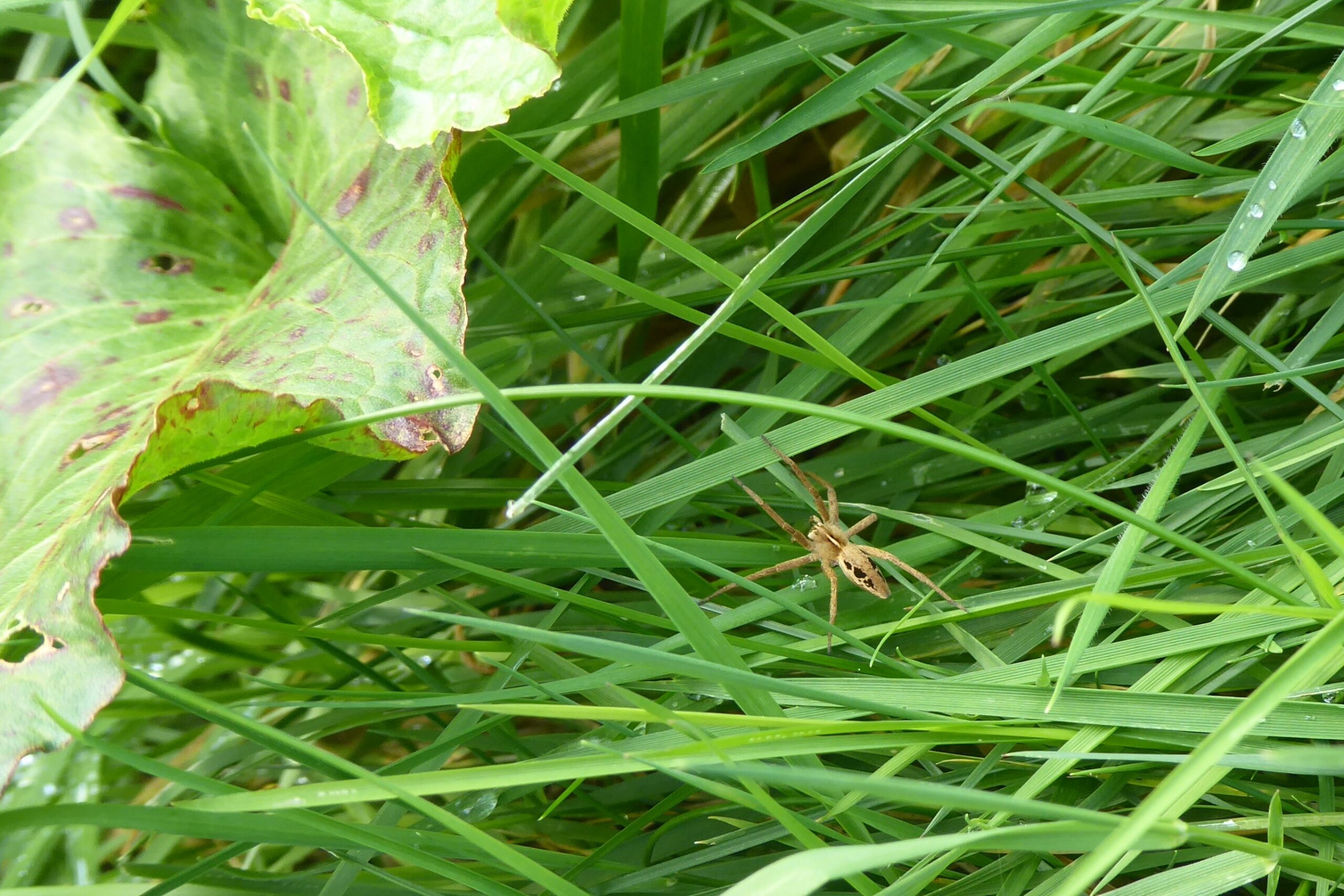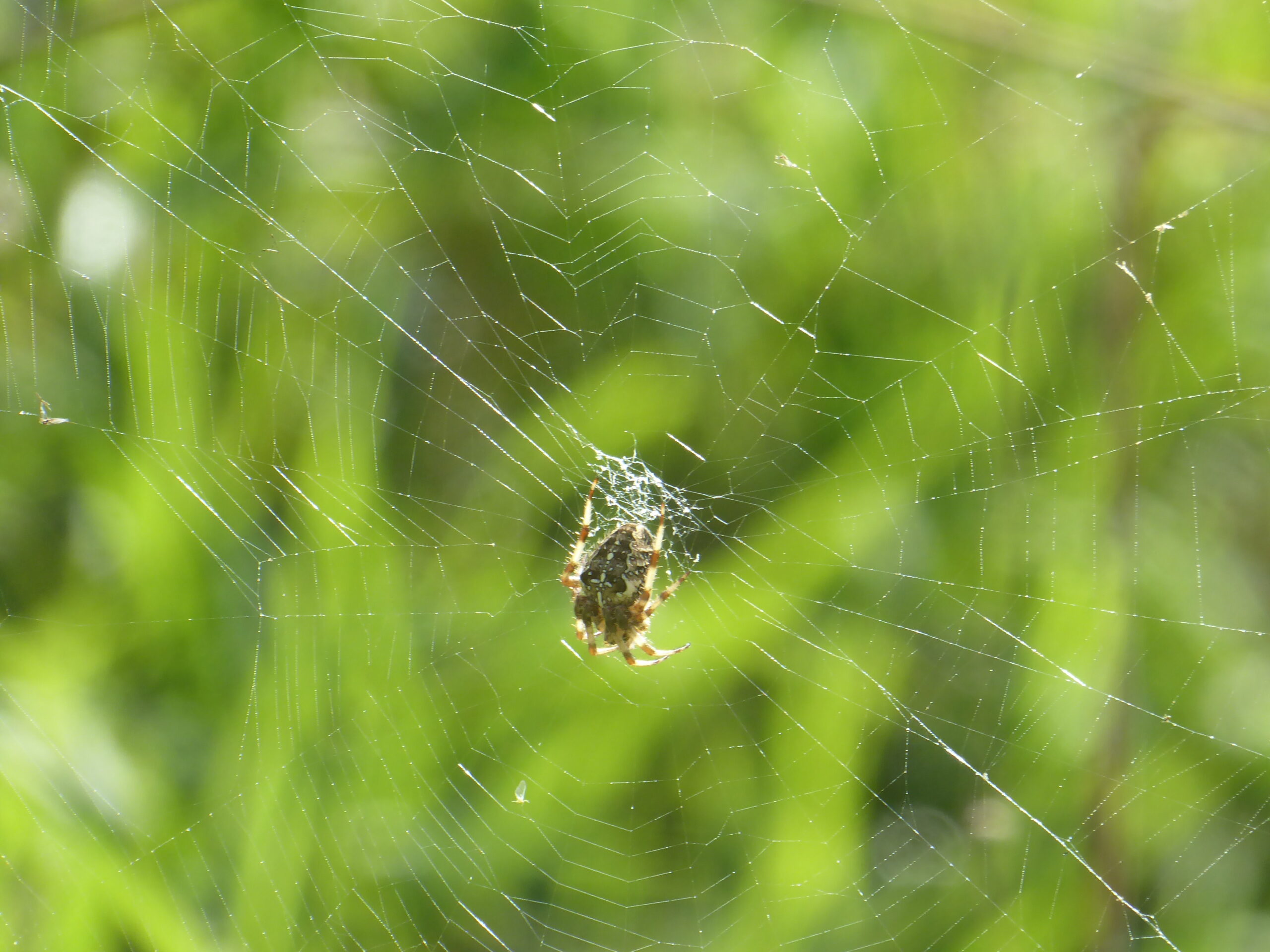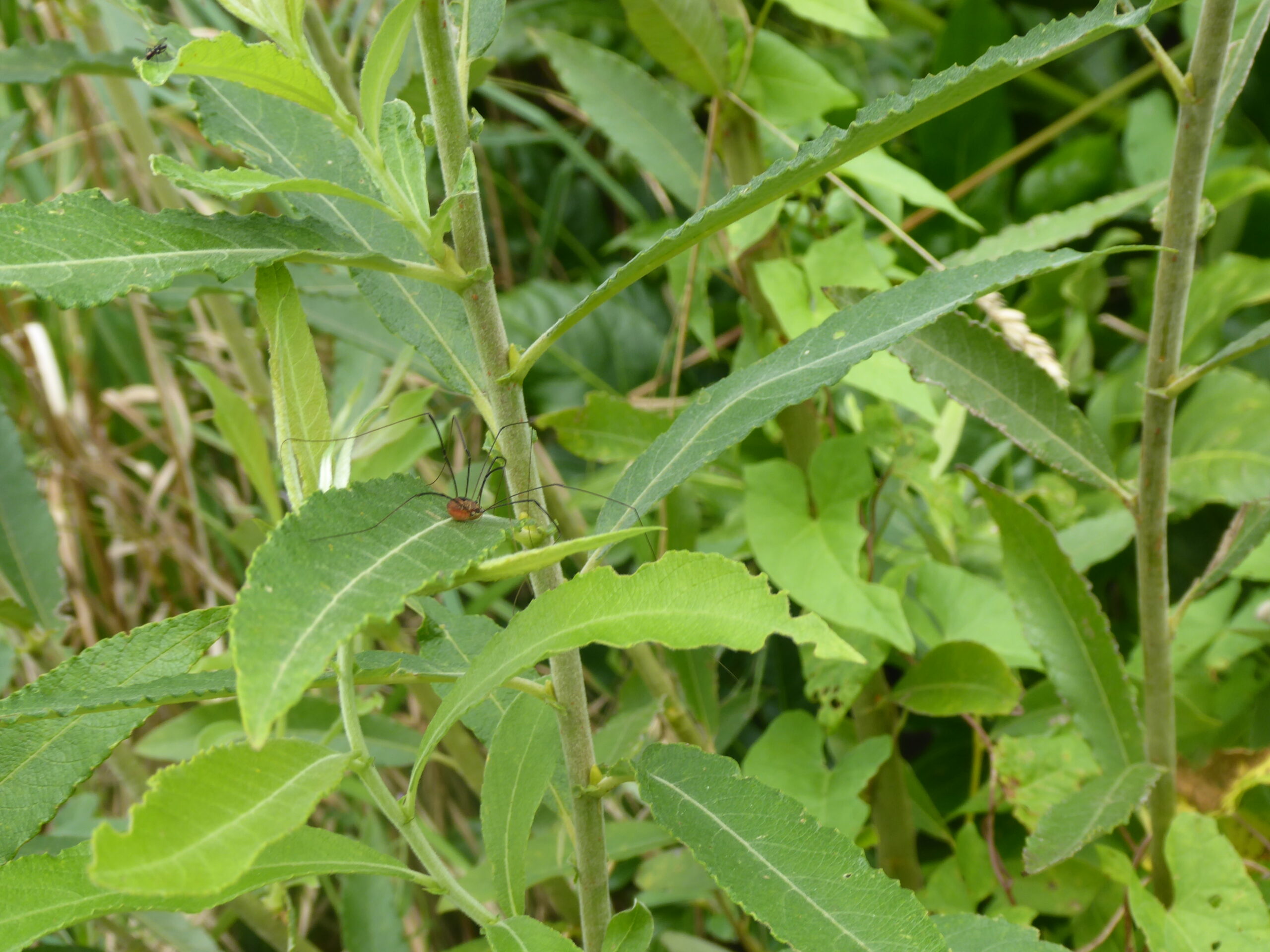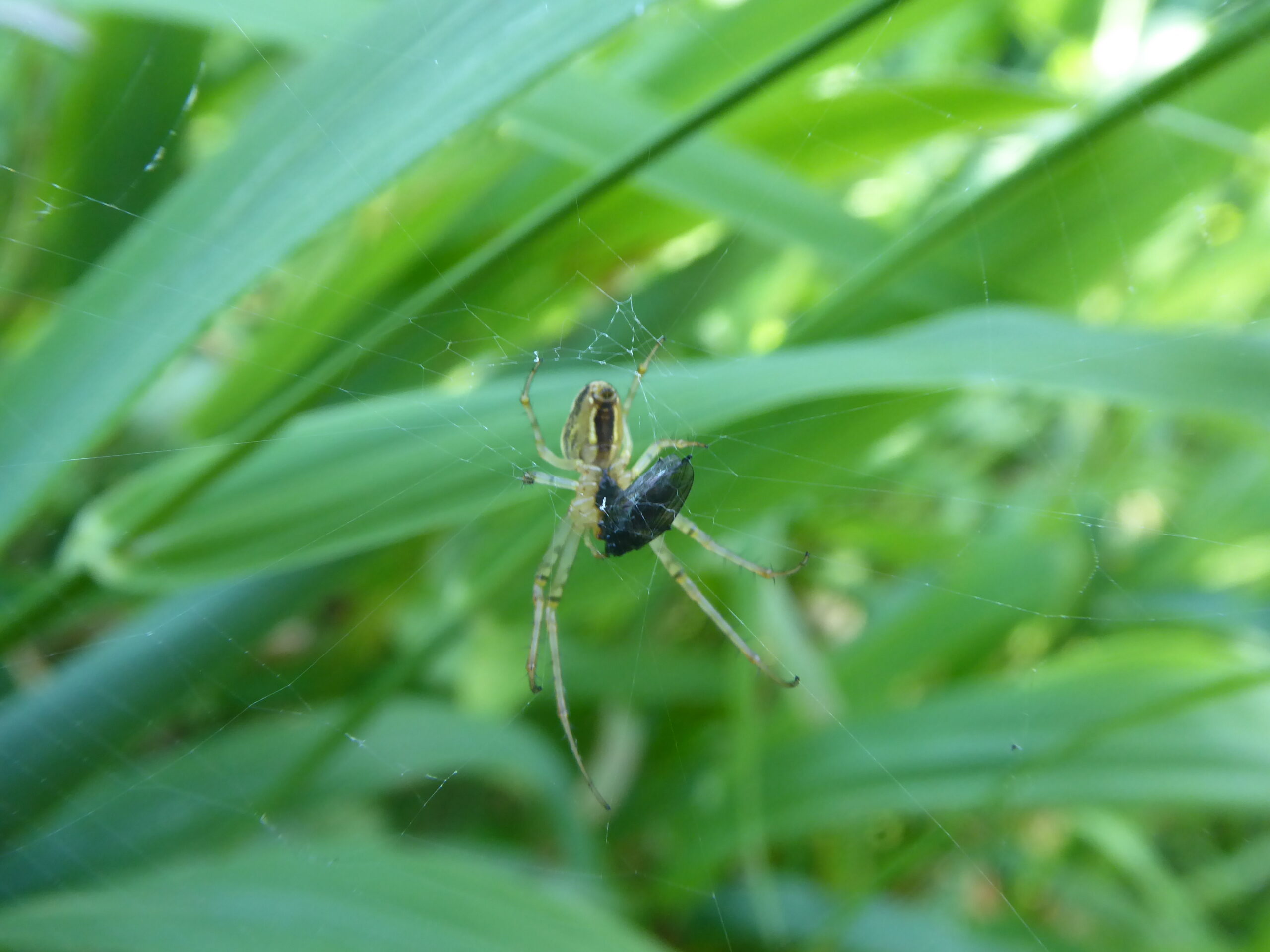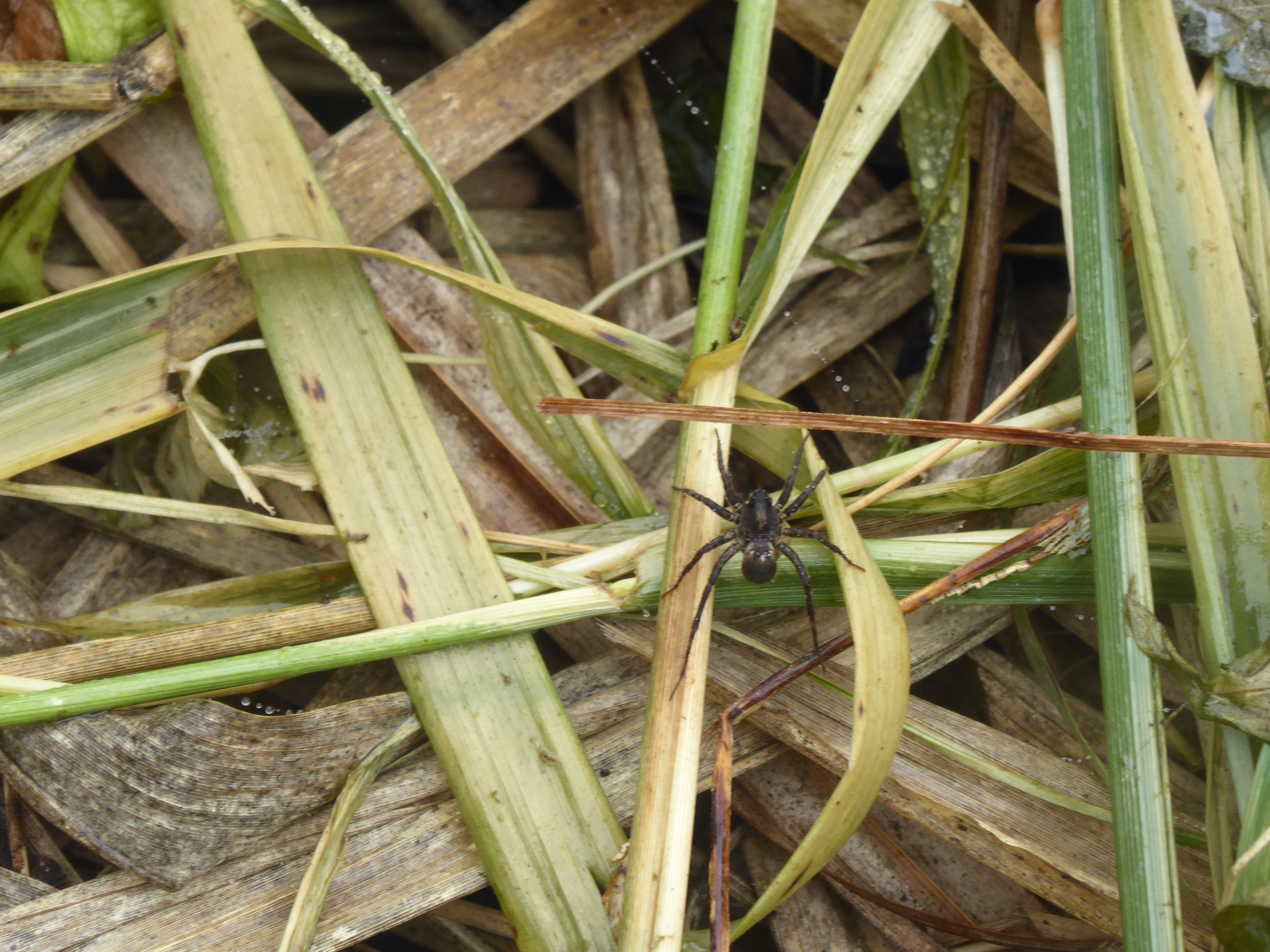Linyphiidae is a family of very small spiders, also known as sheet weavers or money spiders. They are hard to identify due to their size and the sheer number of species. In fact, there are still new species being discovered worldwide. This one, I thought, had quite distinctive colouring, but it looks most like a Peatland Sheet-web Weaver (Hypselistes florens) which is found in North America and Canada, not the UK. The next nearest is Gonatium rubellum, which doesn’t have a common name and is found in the UK. It lives in shaded leaf litter and low vegetation.
Tiny spiders travel around by ‘ballooning’ or ‘kiting’, which means they release a silk thread to catch an air current and pull them along. It isn’t without danger, as they have no control over where they are heading. Money spiders prey on smaller insects and spiders which they catch in their hammock-like sheet-webs, but they are also prey to small birds. Where does ‘money’ spider come from? There is a superstition that if a tiny spider lands on you, it has come to spin you a new suit of clothes, so it brings good luck!
